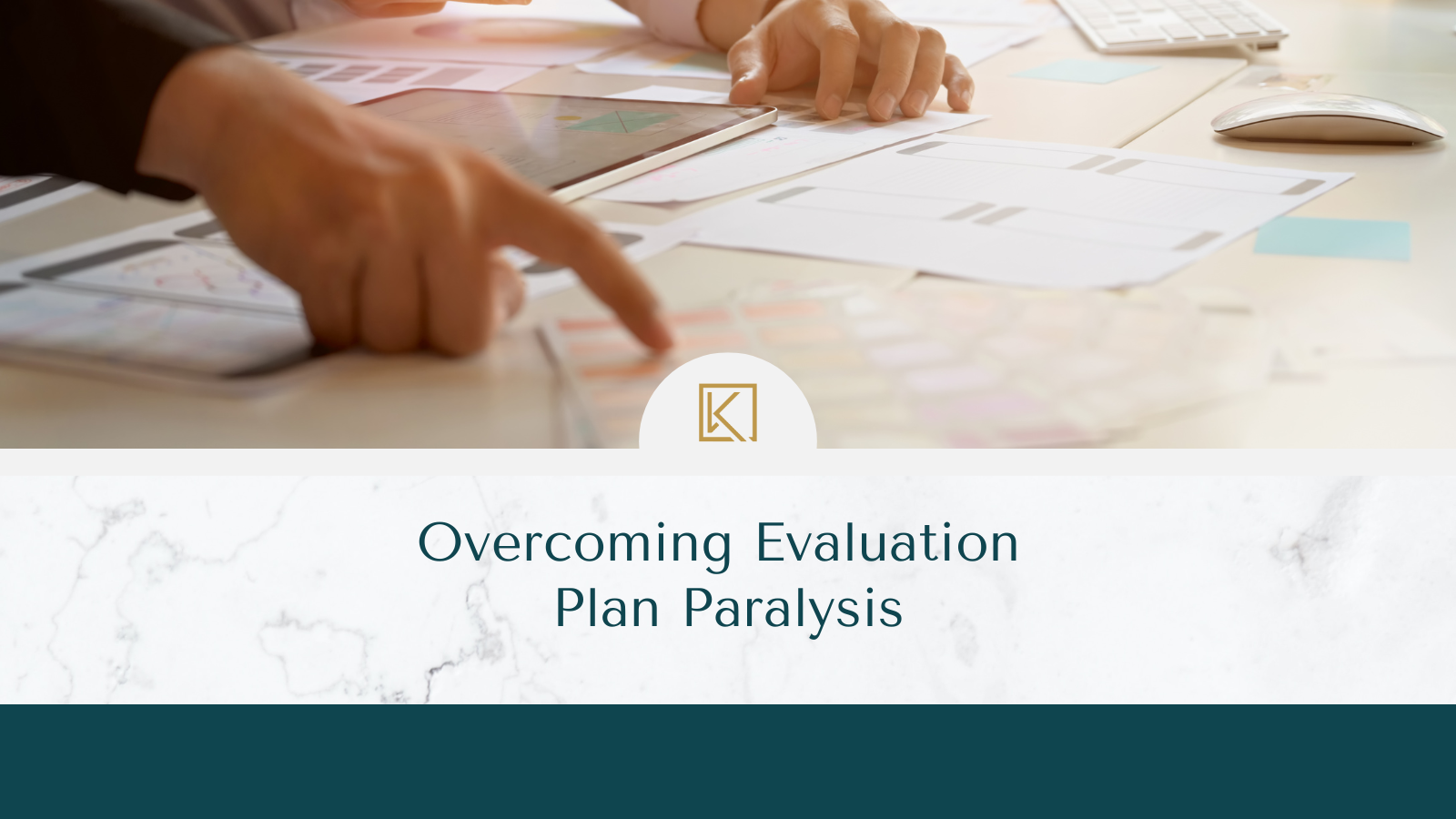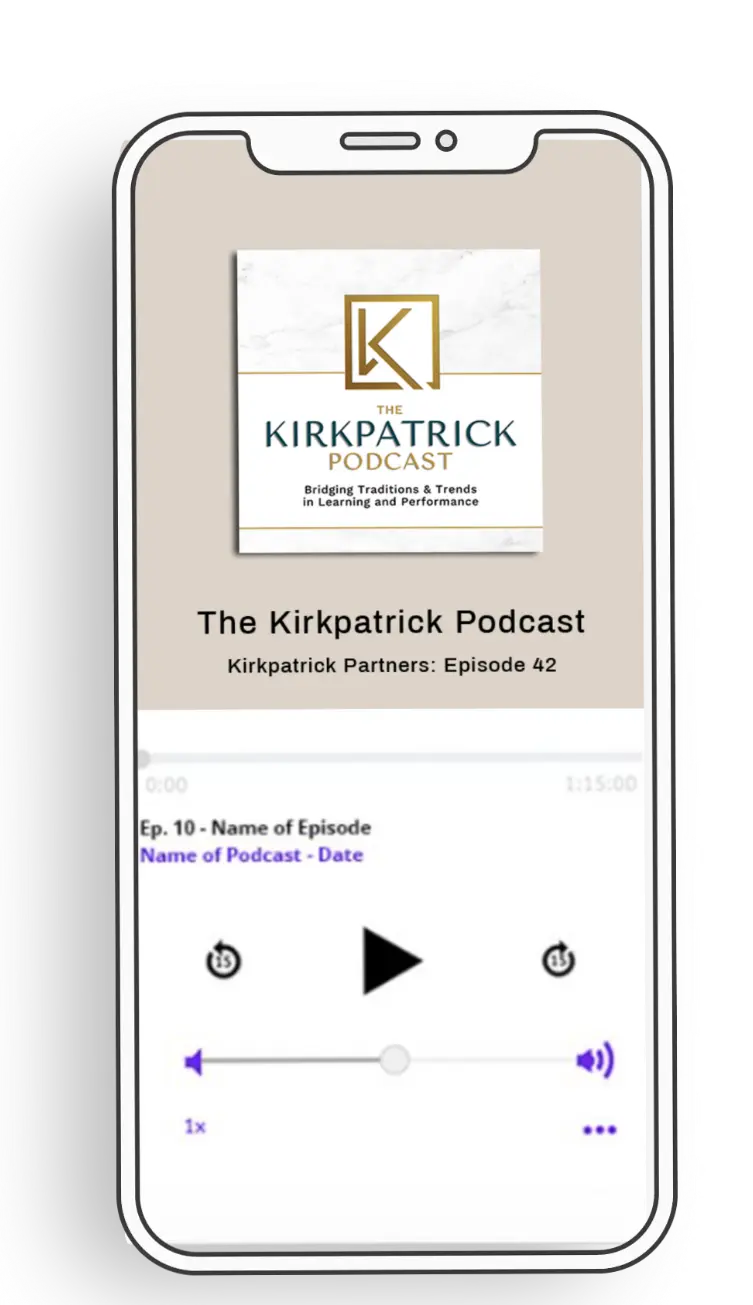Overcoming Evaluation Plan Paralysis

It’s no secret that evaluation planning can sometimes feel like an uphill battle, leaving us with that familiar sense of overwhelm. But here’s the deal: we can’t afford to let this paralysis hinder the impact of our training programs. This week, we’re exploring actionable strategies to overcome evaluation plan paralysis and elevate our strategic training initiatives to new heights of organizational success. So if you’re ready to transform your evaluation planning from a headache into a win and turn your training efforts into unstoppable forces for organizational growth, let’s make it happen together!
Start Small
One of the most common stumbling blocks in evaluation planning is the temptation to tackle everything at once. However, starting small is key to sidestepping this paralysis. Instead of trying to evaluate every level of every program simultaneously, concentrate on one manageable piece at a time. Whether it’s assessing just Level 1 or a specific aspect of Level 3, taking baby steps allows for greater clarity and progress. This incremental strategy aligns perfectly with the adaptable nature of the Kirkpatrick Model, empowering learning professionals to gradually build confidence and momentum.
Build Draft Plans
A blank canvas can feel intimidating, which is why we emphasize building draft plans as a starting point. These initial frameworks serve as valuable tools for kickstarting discussions with stakeholders and securing their support. By presenting stakeholders with concrete proposals, learning professionals can facilitate more productive discussions and simplify the planning process. Plus, having a draft plan in place eases some of the pressure and ambiguity associated with starting from scratch, empowering individuals to move forward with greater confidence.
Find Your People
While gaining support from senior leadership is crucial, remember that it’s not always necessary to start at the top. Building relationships with managers and divisions that are deeply involved in training programs can be just as impactful. By getting buy-in from these key players early on, learning professionals can rally support across the organization. Picking a pilot program that fits closely with strategic goals shows the real-world value of evaluation efforts, paving the way for future successes.
Listen and Learn
As we journey through the evaluation planning process, it’s natural to encounter challenges and roadblocks along the way. But instead of seeing these obstacles as insurmountable walls, let’s view them as stepping stones for growth. When we encounter resistance or skepticism from stakeholders, take a step back, listen carefully, and try to see things from their point of view. By keeping communication channels open and showing a willingness to adjust our approach, we can overcome hurdles and build consensus together effectively.
Evaluation planning may seem overwhelming, but with the right mindset, it doesn’t have to be. Start small, draft plans, connect with stakeholders, and stay open to feedback. By embracing flexibility and collaboration, learning professionals can navigate these challenges confidently. What strategies have helped you overcome evaluation planning hurdles? Share your thoughts below and let’s keep the conversation going!
Ready to learn more? Check out the latest episode of The Kirkpatrick Podcast as Vanessa Alzate and Jim Kirkpatrick welcome special guest Christy Nelson to share valuable insights for implementing your evaluation plan.
Listen or watch the latest episode here:
Don’t forget, the true magic happens when we modernize our training methods and see concrete results. Cultivating an environment of trust, active participation, and continuous enhancement increases the likelihood of our training programs’ success.
Interested in mastering the Kirkpatrick Model? Dive into the Kirkpatrick Evaluation Toolkit, your comprehensive resource for streamlined and impactful evaluation. Learn more here!





